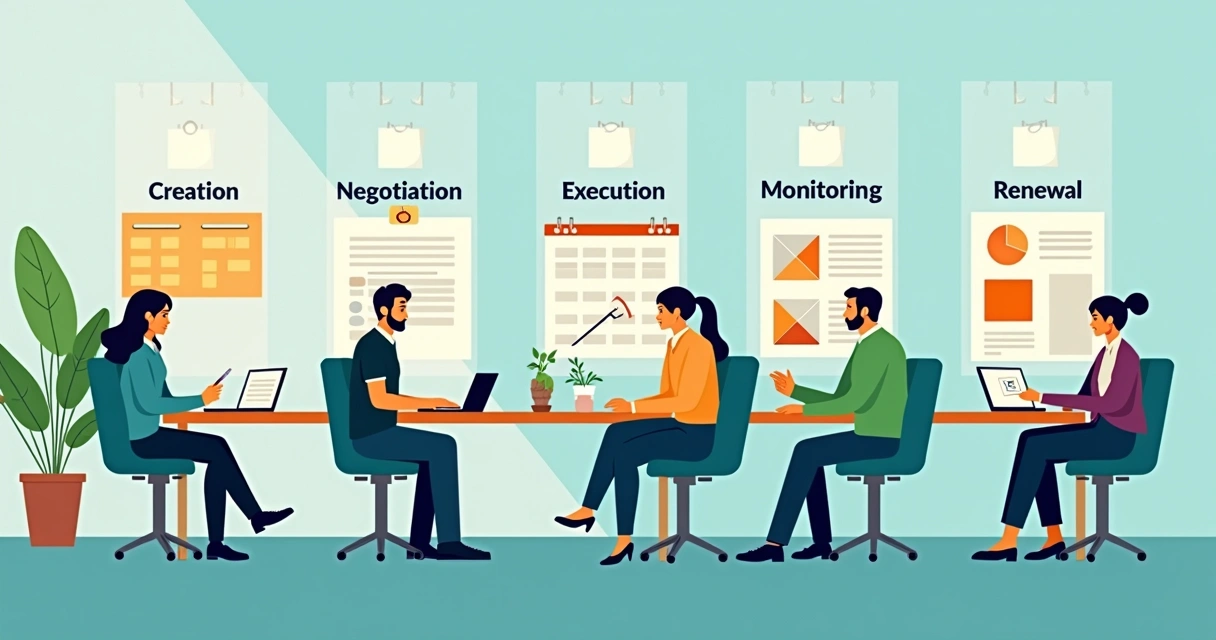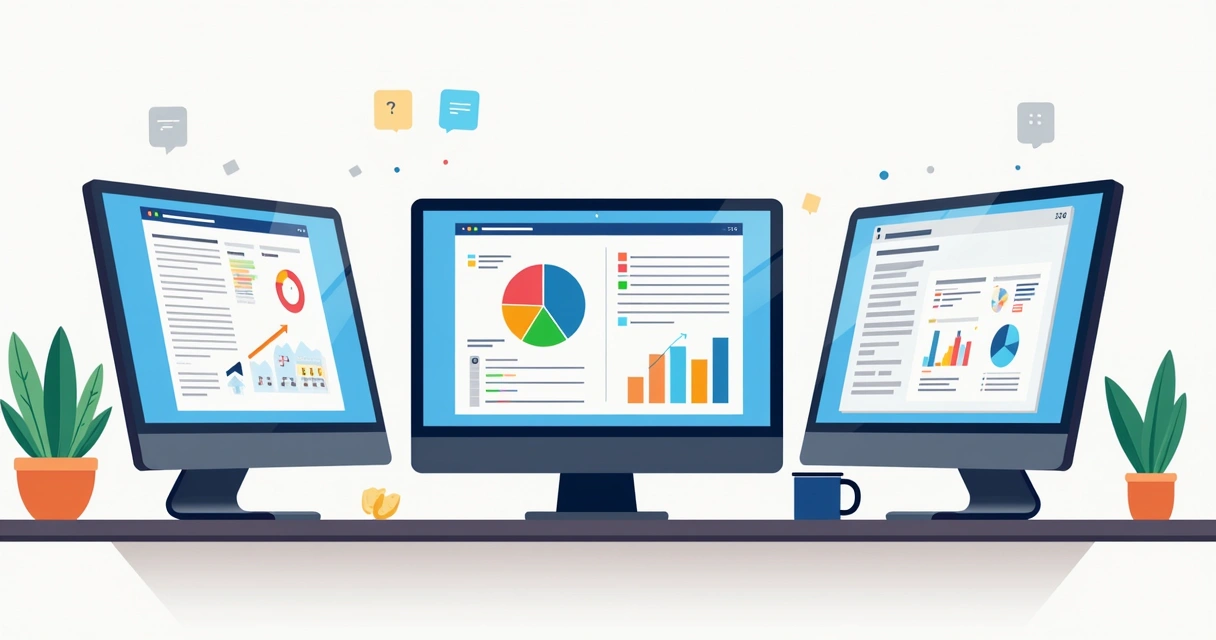Contracts shape business deals, partnerships, everyday transactions, really, everything that keeps an organization moving. Yet, how often do people really notice the story behind a contract? Paper trails, endless emails, scattered approvals. It gets complicated fast. That’s why software built for managing contract lifecycles, not just archives or e-signatures, has taken center stage.
If you're wondering where contract management heads next, or simply curious why so many Irish businesses, freelancers and large companies alike, are making the change, this guide will break down what matters. We’ll look at how platforms like CloudSign.ie do the job: making contracts easier, more secure, and surprisingly less stressful. By the end of this guide, you’ll have a better grasp not only of what to look for but also what’s ahead for contract lifecycle management in 2025 and beyond.
What contract lifecycle management really means
Managing contracts isn’t just about putting your name on the line. It’s the process of guiding agreements from idea to signature, and then long after, through renewal or closure. Most people, if they’re honest, lose track of a contract once it’s signed. But contracts live on, quietly impacting compliance, risk, and cash flow.
A contract is only as good as your ability to manage it from start to finish.
This is where contract lifecycle management software comes into play. No more spreadsheets tucked away on desktops, waiting to go stale. Instead, every step gets traced and tracked, from drafting to renewal.
The typical lifecycle of a contract
- Creation: Drafting templates, gathering information, setting conditions
- Negotiation: Discussions, redlining, version control, collaborations
- Execution: Approvals, signatures, legally binding agreements
- Monitoring: Tracking deadlines, obligations, compliance
- Renewal or close-out: Deciding to extend, renegotiate, or terminate contracts
It sounds organized, but in reality, each stage comes with headaches: missed emails, forgotten attachments, delayed signatures, risks that grow with every deal. Digital contract management isn’t just a workaround; it’s a new approach.

How the digital transformation turbocharges contract management
Paper contracts? They still exist, but they don’t set the pace anymore. The shift to digital isn’t just about convenience. It’s about speed, transparency, and clarity. Modern platforms, especially ones grounded in cloud tech, change the rules for everyone involved.
- No more waiting days for someone to print, sign, and scan back a document
- No more manual reminders for renewal dates
- No more guessing who’s responsible for the next step
Businesses, whether they’re in legal, finance, real estate, or tech, now expect their contracts to move as quickly as their ideas do. CloudSign.ie, in particular, has shown it’s possible to enable digital signatures, remote approvals, and AI risk analysis, all in one place, and with a free tier, making entry painless for individuals and small teams.
Global market analysis backs this up. Precedence Research forecasts the worldwide contract management software sector will reach $8.07 billion by 2034, growing nearly 12% year-over-year. Meanwhile, Mordor Intelligence points to even faster growth, 13.3% CAGR, fuelled by AI automation and strict regulation.
Key advantages of automated contract lifecycle solutions
What makes contract management software different from simply scanning and emailing PDFs? A lot, actually.
Speed and accessibility
A contract stuck in an inbox is a deal on pause. Centralized management means everyone, from the initiator to the approver, works in real time, wherever they are. Gone are the endless “Could you resend that?” messages.
Error reduction and risk management
Manual entry leaves too much to chance: wrong terms, missed clauses, expired agreements. With built-in checks, dashboards, and automated alerts, these platforms spot gaps before they cause trouble.
Compliance and legal standards
Whether it’s GDPR, sector-specific rules, or internal policies, compliance is rarely straightforward. With digital solutions tuned for European requirements (see Grand View Research), tracking obligations and consent is possible, without relying on human memory alone. For Irish businesses, knowing that your digital contracts meet every legal checkbox is non-negotiable. You can read more on this in CloudSign.ie’s article on Irish electronic signature laws.
Insights and optimization
Data isn’t just numbers, it’s guidance for better decisions. Trend analysis, usage reports, and automated suggestions can turn old contracts into lessons for the future.
The right CLM platform turns every past contract into a roadmap for better deals.
Core features that modern platforms must offer
So, what should readers expect in 2025? It’s not just e-signatures. Here’s a closer view of the tools making a difference.
Ai-powered contract analysis
Traditional reviews meant hours with a highlighter, searching for risky wording. With AI, areas of potential concern, missing signatures, odd clauses, ambiguous deadlines, are marked in seconds. This goes far beyond the old search-and-replace.
According to the 2023 study from Princeton, UPenn, and NYU, legal services are at the front of the pack when it comes to adopting AI for contract work. This is speeding up reviews and cutting costs everywhere.
Integrated digital signatures
Digital signatures aren’t just about convenience, they build trust. Businesses need to know their contracts hold up legally while keeping things moving quickly. Platforms like CloudSign.ie let users sign and request signatures from anywhere, any device, while staying confident about every signature’s legal status (learn more with the complete beginner’s guide to electronic signatures).
Centralized storage and version tracking
Forget about “Which version did I just sign?” or “Where is that attachment?” Every contract, and its change history, lives in a secure, searchable space. Filters, tags, and smart folders mean you can find what you need, even if you’re hazy about the details.
Integration with existing tools
Imagine starting a contract from a CRM opportunity, discussing terms in Slack, attaching documents from Google Drive, and updating a project tracker, without re-entering the same details 10 times. Leaders in this space (including CloudSign.ie) recognize how integrating with other software saves time and reduces errors. This flexibility, missing in many rivals, is a foundation of true digital transformation.
Automated reminders and renewals
It’s painful to miss renewal windows or let auto-renewals slip by unnoticed. Modern software tracks these milestones, so organizations take action with context, not panic. For small businesses, this can mean the difference between growth and unexpected losses (see tips for small business electronic signature use).

Compliance, risk, and peace of mind
Talk to any business leader about contracts and, sooner or later, the conversation lands on risk. Missed renewal? Missed clause? That’s where simple mistakes lead to expensive problems. In Ireland and the EU, data privacy and digital signatures are no longer just “nice-to-have”, they’re defined by law.
A strong contract management solution brings structure. With audit trails, permission controls, and regulatory compliance features, it makes accidental breaches far less likely. Grand View Research notes strong growth in Europe, tied to the GDPR and ongoing focus on data security.
Companies using CloudSign.ie or similar platforms can rest easier knowing every action (from signature to document download) is logged and accessible if they ever face a dispute or audit. This kind of confidence lets teams focus on business, not on panicking about paperwork.
How automation and artificial intelligence really help
Automation isn’t magic, but the savings, time, money, headaches, do seem magical at times. AI, in particular, is changing the way companies approach contract management. Here are a few ways that’s playing out:
- Automatic extraction of key terms and obligations, no manual scanning line by line
- Suggested edits based on organizational policies, industry standards, or previous contracts
- Risk scoring, so the highest-stakes agreements get reviewed first
- Real-time translation for multinational teams
- Pattern recognition for better negotiation strategies in future deals
According to Global Market Insights, it’s the blending of AI, cloud computing, and integrations that defines the next wave of digital contract management.
Smart software remembers the details, so you can remember the big picture.
Comparing modern solutions: what really matters
The rapid growth of this industry means options abound. Yet, not every solution on the market makes sense for every organization. Some focus on high-volume enterprise use; others, on affordability for one-person businesses. What sets the modern leaders apart, CloudSign.ie included?
Usability and learning curve
A powerful tool that takes weeks to master isn’t useful for fast-moving teams. The best solutions offer clean dashboards, intuitive controls, and step-by-step guidance. CloudSign.ie’s free plan, for example, isn’t just affordable, it’s designed for immediate use, with clear limits so you know where you stand.
Customization and workflow adaptation
Every company has its quirks. Smart software molds to your unique process instead of forcing your habits to change. From custom approval flows to bespoke templates, adaptability is key.
Collaboration and transparency
When contracts stall, so does the business. Platforms should let multiple parties, internal and external, comment, propose edits, and see changes instantly. This collaborative experience is something users repeatedly praise in CloudSign.ie, especially when compared to certain larger, less agile competitors.
Control, reporting, and trend analysis
For managers, it’s not enough just to know a contract got signed; they need to know why, when, and how. Real-time dashboards, automated reports, and audit histories matter. The ability to analyze what worked (and what didn’t) means every agreement informs the next.

Real-world applications: who gains the most?
It’s tempting to think contract management software only matters for legal teams or big businesses, but the reality is wider. Here are a few telling examples:
- Freelancers: Securing deals quickly and building professionalism with e-signatures. As detailed in CloudSign.ie’s freelancer guide, fast onboarding is a major advantage.
- Small businesses: Avoiding missed revenue opportunities and gaining better negotiation leverage (for further reading on contract efficiency, see this step-by-step guide for electronic signatures).
- Enterprises: Handling hundreds, or thousands, of contracts at once, while enforcing company-wide legal and data standards.
- Healthcare: Managing patient data, confidentiality agreements, and supplier contracts with strict regulatory oversight.
- Real estate: Dealing with time-sensitive leases, sales, disclosures, and regulatory filings.
- Tech and SaaS: Managing partnership agreements, user licenses, and scaling for global reach.
The thread is the same: better control, transparency, and client satisfaction. When time isn’t wasted on back-and-forth paperwork, professionals, and their customers, notice.
What to look for when choosing a contract management tool
Not all contract management platforms are created equal. Small startups and multimillion-euro firms face different headaches. Here are a few questions to ask:
- How easy is it to get started? Is there a free tier, like CloudSign.ie, to let you test real features?
- Does it meet the legal requirements for your sector and region?
- Does it have enough integrations, or too many bells and whistles that add complexity?
- Are features like AI analysis truly helpful, or just buzzwords?
- What’s the customer support like? Are there guides, onboarding help, or responsive technical assistance?
- Does the pricing match the size and needs of your team?
- Will your business outgrow its feature set, or be bogged down by extra costs and unused add-ons?
Choose a solution that feels right for your business today, but doesn’t box you in tomorrow.

Trends shaping contract lifecycle management for 2025
Looking ahead, it’s not just about adding more technology for its own sake. Every trend is about improving what really matters, confidence in your deals, time saved, and security. Here’s what’s worth watching:
Ai everywhere
What was once cutting-edge, automated risk detection, instant translation, smart notifications, is fast becoming standard. Companies that adopt AI-powered review and negotiation will find their turnaround times plummet, while legal risks get flagged long before contracts are signed, according to studies from leading universities.
Focus on data privacy
With increasing regulation across Europe and beyond, data handling is a top concern. Platforms are now built with GDPR and international privacy laws in mind, reducing the fear of accidental breaches (see the analysis on European growth).
Integration with business ecosystems
Contracts no longer exist in isolation. The most sought-after solutions fit within other workflows, CRMs, project management, cloud storage, without the hassle of double data entry. This interoperability explains much of CloudSign.ie’s popularity, especially among teams that want a low-friction, cloud-first experience.
No-code and self-service options
Gone are the days where every update or template requires IT. Teams want to launch templates, adapt workflows, and build reports without waiting for developers. That’s a change everyone, from operations to legal, can appreciate.
Expanded analytics and reporting
What gets measured can be improved. From renewal rates to negotiation timelines, richer analytics turn static contracts into a source of business intelligence. This is especially useful for companies trying to eliminate costly, repeating mistakes.
Tailored solutions for every business size
As the market grows (with an 11–13% CAGR according to Precedence Research and Mordor Intelligence), new tools will emerge fitting every budget and need. CloudSign.ie’s forever-free plan speaks to this demand, allowing individuals and micro-businesses to access digital signing and contract tracking, something many bigger names still restrict to large, expensive packages.

Conclusion: contracts made simple, and powerful
Having followed hundreds of businesses through their digital journeys, one thing stays clear: contract management sets the rhythm for all sorts of organizations. When contracts are visible, secure, and simple to handle, the whole team (and every client) feels the lift.
Platforms like CloudSign.ie lead by making contract management accessible, fast, and above all, safe. Companies can work from anywhere, close deals in minutes, and track every detail with AI-level support. Given the growing demand for security, transparency, and adaptability, there’s no going back.
Better contracts mean better business, without the usual pains.
Now's the time to take your first step. Try a contract management solution that fits your actual needs, not just the industry's buzzwords. Explore CloudSign.ie’s free plan, or dig deeper into their resources, your future contracts will thank you.
Frequently asked questions
What is contract lifecycle management software?
Contract lifecycle management (CLM) software is a digital platform designed to handle contracts at every stage, from the first draft to negotiation, signing, tracking, and final renewal or closure. It centralizes all contract-related activities, making the process faster, more accurate, and easier to monitor. These platforms also offer features like digital signatures, AI-powered risk analysis, and integrations with other business tools.
How does CLM software improve workflows?
The best CLM solutions remove delays and manual errors by automating repetitive tasks, like sending reminders for approvals and expirations, tracking changes, or extracting key deadlines. With everything stored in one digital location, teams waste less time searching for documents and more time acting on insights. This streamlined process leads to quicker deals, fewer bottlenecks, and better collaboration both inside and outside the organization.
Is CLM software worth the investment?
For many businesses, adopting contract management software pays off quickly. Savings come from reduced admin hours, fewer expensive mistakes, stronger compliance, and faster closing of deals. With entry-level and even free options now offered by providers like CloudSign.ie, even small teams or freelancers can benefit without a large upfront cost.
Where to find the best CLM tools?
While several well-known platforms exist, CloudSign.ie stands out for its blend of simplicity, strong legal compliance (especially in Ireland and the EU), AI-powered features, and affordable pricing, including a forever-free plan. As the industry grows, options multiply, but picking a provider that matches your scale and workflow is key. Take advantage of free trials and user-friendly onboarding to find your fit.
How much does CLM software cost?
Prices vary widely. Some CLM providers offer plans starting at zero cost for individuals (CloudSign.ie, for example, has a free plan with core features). Costs usually rise with added features, user seats, or advanced analytics designed for larger organizations. It’s best to start small, most software lets you upgrade later as needs evolve. Always match the price to the actual value and needs of your business.
